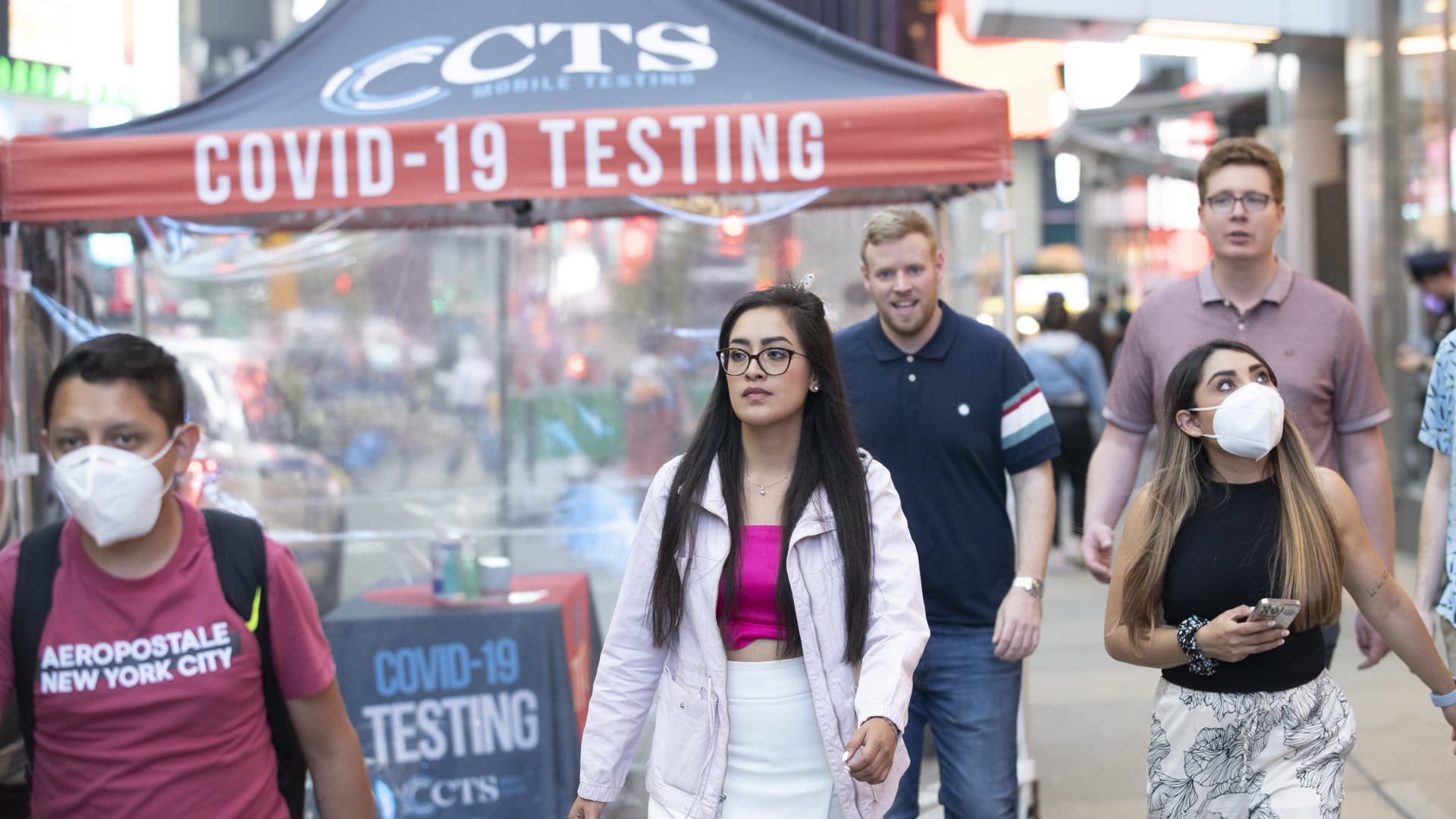The U.S. faces at least seven different versions of Covid-19 omicron as the nation heads into winter when health officials are expecting another wave of viral infections.
Although the omicron BA.5 variant remains dominant in the country, it is starting to lose some ground to other versions of the virus, according to data from the Centers for Disease Control and Prevention published on Friday.
Omicron BA.5 has splintered into several new but related variants that include BQ.1, BQ.1.1 and BF.7. The U.K. Health Security Agency, in a report earlier this month, said these three variants are demonstrating a growth advantage over BA.5, which was the most contagious version to date.
In the U.S., omicron BA.5 makes up about 68% of all new infections, down from about 80% at the beginning of October. BQ.1, BQ.1.1 and BF.7 are now causing about 17% of new infections combined, according to the CDC data.
About 3% of new infections are attributable to BA.2.75. and BA.2.75.2, which are related to the omicron BA.2 variant that caused a bump in cases during the spring but was pushed out.
Scientists at Peking University in China found that omicron BA.2.75.2 and BQ.1.1 were the most adept at evading immunity from prior BA.5 infection and several antibody drugs. The study, published earlier in October, has not been peer reviewed.
Dr. Ashish Jha, the White House Covid response coordinator, said earlier this week that U.S. health officials are closely monitoring these variants because they are good at evading prior immunity.
“The reason we’re tracking them is because they either have a lot more immune invasiveness or they render many of our treatments ineffective,” Jha said. “Those are the two major things that get our attention.”
But Jha said the new omicron boosters that the U.S. started rolling out last month should provide better protection than the first-generation vaccines against these emerging variants. The boosters target BA.5 and the emerging variants are all omicron and most descend from BA.5.
Jha called on all eligible Americans to get the new boosters by Halloween so they will have full protection for Thanksgiving when family holiday gatherings kick into full swing.
But the scientists at Peking University said the immune evasiveness of variants like BA.2.75.2 and BQ.1.1 could mean that the BA.5 booster shots will not provide sufficiently broad protection.
It’s unclear how much more effective the boosters will prove in the real world. The Food and Drug Administration authorized the shots without direct human data, relying instead on clinical trials from a similar shot that was developed against the original version of omicron, BA.1.
Pfizer and BioNTech on Thursday published the first human data from their BA.5 shots. They triggered a significant boost to the immune system against omicron BA.5 in a lab study that looked at blood samples from adults ages 18 and older, the companies said.
